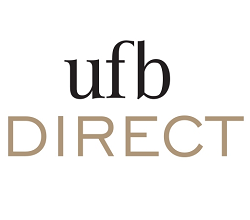It’s a pretty good time to have money in a savings account. The Federal Reserve’s numerous federal funds rate hikes that took place in 2022 and 2023 have led to some of the most attractive savings account rates we’ve ever seen.
And given that savings accounts are practically a risk-free endeavor (provided your bank is FDIC-insured and your total deposits at the bank are limited to $250,000), it’s easy to see why you’d prefer to keep your money in there as opposed to, say, a stock portfolio where you risk losing money.
But actually, if you keep all of your money in a savings account, you risk losing out on money in the long run. And the amount of money you could lose over time might shock you.
You could end up with a serious shortfall on your hands
A savings account is the best place to keep money you’ve designated for your emergency fund. You should actually never invest your emergency fund because you don’t want to risk having your balance decline at a time you might need it. And while stocks can be sold fairly quickly in a brokerage account, you can get your money out of your savings account immediately should that need arise.
Our Picks for the Best High-Yield Savings Accounts of 2024
|
American Express® High Yield Savings 
APY 4.25%
|
APY 4.25%
|
Min. to earn $1 |
|
UFB Secure Savings Account 
APY 5.25%
|
APY 5.25%
|
Min. to earn $0 |
|
Western Alliance Bank High-Yield Savings Premier 
APY 5.31%
Min. to earn $500 to open, $0.01 for max APY
|
APY 5.31%
|
Min. to earn $500 to open, $0.01 for max APY |
But once you’ve built up your emergency fund, you should think twice before putting additional cash into a savings account — even a high-yield one with a generous interest rate attached to it. The reason? A stock portfolio could deliver a much higher return over time.
Over the past 50 years, the stock market’s average annual return has been 10%. A lot of savings accounts today are paying 4% or more, but that’s not the norm.
But hey, let’s pretend you’ve got $10,000 on top of your emergency fund, and you’re able to snag a 4% return on that money in a high-yield savings account over the next 30 years. If so, you’re looking at growing that $10,000 to $32,434.
Watch what happens when you invest that $10,000 in stocks, though. At a 10% return, in 30 years, your $10,000 could be worth $174,494. That’s a difference of $142,060.
Use a savings account for the right reason
Your savings account should serve as a safe place to store the cash you might need for unplanned bills. It should not be a tool you use to build wealth over time. So while you should absolutely keep your emergency fund in a savings account, money you’re putting away for long-term goals, like college or retirement, should be invested.
And yes, when you invest money, you do take on risk. But if you’re investing over a long period of time, you have the opportunity to ride out market downturns and come out ahead.
So if you’re sitting on a fully loaded emergency fund — which you should be super proud of, by the way — then it may be time to stop putting money into the bank. Instead, explore your options for opening a brokerage account or individual retirement account (IRA) that allows you to grow wealth more efficiently.
These savings accounts are FDIC insured and could earn you 14x your bank
Many people are missing out on guaranteed returns as their money languishes in a big bank savings account earning next to no interest. Our picks of the best online savings accounts could earn you 14x the national average savings account rate. Click here to uncover the best-in-class accounts that landed a spot on our short list of the best savings accounts for 2024.
